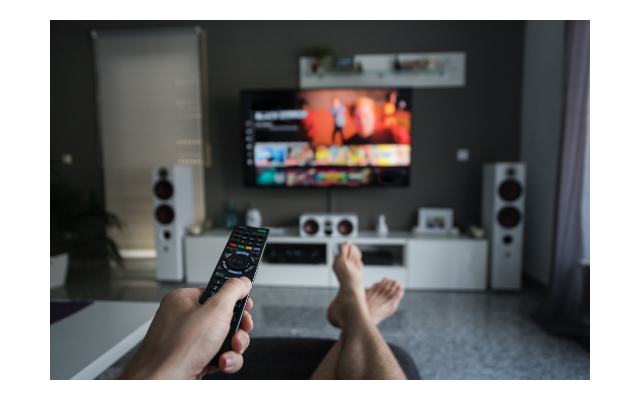How Connected TV Puts Television Back in the Marketing Playbook
Connected TV empowers advertisers with the targeting, attribution, and measurement capabilities they rely on for performance campaigns.
Throughout history, television has been about as far away from the performance advertiser’s playbook as possible. Linear TV relies on broad audience demographics. And to this day remains almost entirely removed from the performance metrics that digital channels like social media and search engines can offer. Enter connected TV (CTV), a channel that most consumers are already extremely comfortable with but that many advertisers haven’t yet considered, to their own detriment.
In this article, we’ll explore the ways that connected TV turns television into a viable — and lucrative — option. An option that can carry any company’s performance TV advertising strategy.
What Is Performance TV Advertising?
Performance TV advertising is the ability to deliver ads to targeted television audiences. And to be able to measure and attribute the results of those campaigns. Traditionally, it was incredibly difficult to decipher the results of TV advertising efforts. For many brands, investing in a new ad channel requires a positive calculation of return on ad spend. ROAS is virtually impossible to predict when the results of a campaign can’t be measured. Performance TV advertising combines the predominance of television today with the targeting, measurement, and attribution capabilities that advertisers have grown accustomed to with other digital channels.
How Does Connected TV Advertising Work As a Performance Channel?
Historically, linear TV advertising has been the domain of major corporate brands with the resources to invest in slow-burn brand awareness campaigns distributed to the masses. When it comes to performance advertising — which seeks to drive sales in the short-term — pouring investment into an unproven and untrackable ad channel just doesn’t seem wise. Imagine what happens after a consumer sees a linear television ad that captures their attention; they open a web browser to search for the brand or product. In the end, Google receives attribution for that website click even though it should actually be attributed to the television ad.
The advent of connected television has simultaneously brought more viewers to their screens and unlocked critical measurement and attribution functions. The expectation in 2022 was for more than 204 million Americans — over 60% of the US population — to use connected TV apps. With the plethora of connected, streaming, and smart TV options available today, it’s no surprise that 81% of viewers say they would prefer to watch ad-supported television over paying for yet another subscription service. Taken together, statistics like these show that connected TV is incredibly popular. And also that consumers are primed to expect — and even appreciate — the ads that come with it.
How Does It Work?
With that audience in mind, we can look at how connected TV advertising leverages data to more accurately attribute campaign results on a household basis. First, an ad is delivered to a connected TV advertising platform. Then the device’s IP address is stored in an exposure file. When additional devices in the household connect to the same IP address, they are also added to the exposure file. At some point, someone in the household uses one of those connected devices to make a purchase. Or download an app, visit a website, or otherwise complete the action that the initial ad intended. Data about that action, otherwise known as the outcome event, is stored in an outcome file. The information stored in exposure files is compared to the information in outcome files, and any IP matches are attributed and recorded.
Connected TV advertising (like smart TV advertising, for example), is an unambiguous one-to-one model. However, linear TV ads are purchased and measured using panels, indexes, and samples. The ability to attribute campaign results is just one of the elements that makes connected TV such a powerful performance channel. Other benefits of performance TV advertising include:
- Expanded reach: Connected TV’s per-household approach means that each ad is likely to be seen by more than one person, without additional investment.
- Precision targeting: Linear TV relied on the broadest possible demographics. Connected TV enables first- and third-party data collection, and even retargeting options.
- Increased engagement: Connected TV’s video completion rate is about 15% higher than other platforms. And consumers find CTV ads to be more memorable and more relevant.
Introducing a Performance Advertising Platform for Connected TV
Today’s marketers must open their eyes to the possibilities of television as a performance channel. Connected TV empowers advertisers with the targeting, attribution and measurement capabilities that linear television lacks. Because it doesn’t rely on cookies or IDFA data, the connected TV ecosystem is also still strong and healthy. Even in light of privacy updates from companies like Apple and Google. That’s why tvScientific created one of the first performance TV advertising platforms.
We empower advertisers with fully integrated data and targeting options. This allows you to activate first-party audiences. And build third-party data segments. As well as retarget visitors from the web back to their connected TV. Our premium inventory unlocks access to connected TV devices, native apps and platforms. Plus the premium streaming services that users know and love. We give you access to powerful attribution capabilities that match connected TV ad exposure to specific outcomes. Additionally, we provide real-time reporting. As well as built-in, always-on testing to monitor and measure the incremental value of your connected TV advertising efforts.
Ready to learn more about how Alpha Media and our tvScientific platform can put television back in your performance advertising playbook? Get in touch today.



